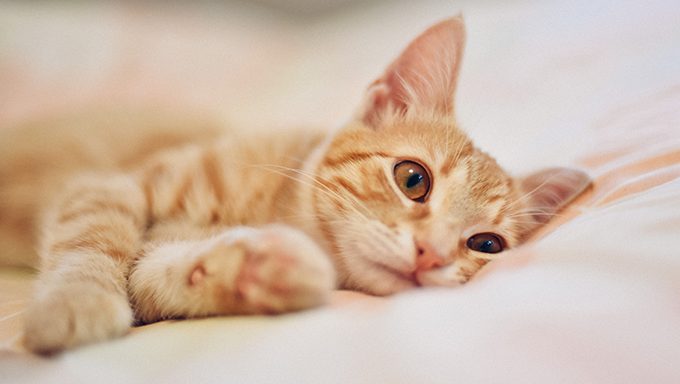Seasonal Affective Disorder, shortened as SAD, is a condition that affects humans during the months with less sunlight. People affected by SAD can experience excessive fatigue, trouble concentrating, and generalized depressive episodes.
As the days are getting shorter and the temperatures are dropping, you may have noticed that you’re not the only one in the household who can’t seem to shake the “winter blues.”
Does this same ailment affect our cats? The answer isn’t exactly clear, but there are some things you should know if your cat seems like they’re feeling down in winter.
What Is Seasonal Affective Disorder?
While most of us can agree that warmer months are a lot sweeter than bitter winters, simply feeling restless or complaining about the weather is not the same as SAD.
Although not fully understood, SAD is partly created by the lack of natural light during these times. Natural light is used to keep melatonin in check, which can make mammals sleepy. It is also used to help the brain produce serotonin, AKA the “feel good” chemical in mammals’ brains.
Less sunlight means more melatonin and less serotonin, which can lead to serious depressive episodes in humans.
Do Cats Get Seasonal Affective Disorder?

Until recently, there hasn’t been an official diagnosis of SAD in an animal, as there was no model for it. Studies on hamsters and grass rats may prove that the seasonal change can negatively affect animals as well. When exposed to less sunlight, the hamsters and grass rats acted depressed.
The study discovered that there was an alteration in the rodents’ brain chemistries. The hippocampus shrank, which is thought to be a reason for depression.
The study has not been directly on cats, but it does show that the chance of SAD affecting them is not inconceivable. After all, cats are a lot more emotionally complex than hamsters and rats, making it much more likely that they experience changes in brain chemistry and mood during periods of shorter days.
Cats who are primarily outdoor cats may feel a more drastic shift in mood and demeanor, given that their bodies are likely used to getting more natural light than an indoor-only cat.
Some vets believe SAD can indirectly affect our feline friends as well. Cats are highly intuitive creatures and although they may not outwardly show love all the time, they are in tune with our feelings.
If you are experiencing symptoms of SAD, your cat could pick up on this and mirror your emotions.
How Can I Help My Cat Feel Better?

So how do you combat Seasonal Affective Disorder in your cat? It is important to know the symptoms first.
If you notice your cat has had a drastic change in appetite, excessive fatigue, nighttime restlessness, reduced social interactions, or extreme hair loss, it may be time to consider helping your cat fight the funk.
The simplest manner is the same solution that many humans with SAD use: increase time in natural daylight.
If your cat has a lounge or bed, put it next to a window or underneath a skylight. If you have a kitty-proof window, open it up and let them perch on the ledge, or if you have an outdoor cat enclosure, get some playtime when the sun is its brightest. Outdoor playtime with your cat could also help you get some much-needed rays if you’re feeling a depressive episode coming on.
Another remedy is an artificial sunlight lamp. These therapy lights use special bulbs that mimic the natural light of the sun. You can find them at almost any major general retailer or online. Simply turn the light on in a place your kitty likes to hang out while they’re awake, so their retinas can take in all of the light.
Have you noticed a change in your cat’s demeanor since the days have gotten shorter? Do you think your cat might be suffering from SAD? Let us know in the comments below!









